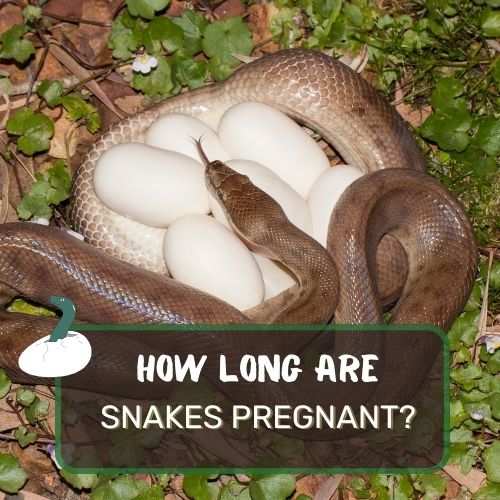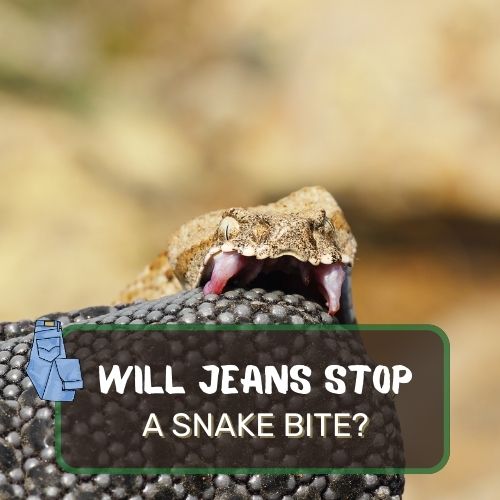
Curious about snake pregnancies? Wondering “How long are snakes pregnant for?”
This article dives into the intriguing world of snake gestation periods, exploring the factors that influence the duration of snake pregnancies.
Uncover the role of species variation, environmental conditions, and female health in shaping the timeline of snake reproduction.
Discover the unique gestation periods of common pet snakes like corn snakes, gopher snakes, king snakes, and milk snakes, shedding light on their diverse reproductive strategies.
Delve into the methods used to determine snake pregnancies, from palpation and ultrasounds to X-ray examinations.
Explore the crucial postpartum care required for both egg-laying and live-bearing snake species.
From egg incubation to monitoring temperature and humidity levels, find out how to ensure a smooth transition from pregnancy to parenthood in the snake kingdom.
Table of Contents
- 1 How Long Does Snake Gestation Period Last? (Quick Answer)
- 2 Factors Affecting Snake Pregnancy
- 3 Gestation Periods of Common Pet Snakes
- 4 Gestation Periods of Other Snake Species
- 5 Signs of Snake Pregnancy
- 6 Determining Snake Pregnancy
- 7 Care During Snake Pregnancy
- 8 Snake Birth and Postpartum Care
- 9 Uncommon Situations in Snake Pregnancy
- 10 FAQ
- 11 Conclusion
How Long Does Snake Gestation Period Last? (Quick Answer)
The gestation period of snakes can vary widely based on factors such as species, environmental conditions, and the health of the individual snake. Unlike mammals, snakes do not experience pregnancy in the same way, as they are oviparous (egg-laying) creatures. The gestation period for snake eggs typically ranges from a few weeks to several months. For instance, common pet snakes like corn snakes may have a gestation period of around 30 to 45 days, while larger species like green anacondas can have a much longer gestation period of around 6 to 7 months.
It’s important to note that snake reproduction is diverse, and each species follows its unique timeline, making the gestation period highly variable within the snake kingdom.
Factors Affecting Snake Pregnancy

When it comes to the duration of snake pregnancies, several factors play a pivotal role. Understanding these factors can provide valuable insights into the intriguing world of serpent reproduction.
Species Variation
Different snake species exhibit diverse gestation periods. Nature has its own timeline for each species, reflecting their unique reproductive strategies.
Some snakes might be “speedy parents,” giving birth to their offspring in a matter of weeks, while others take their time, requiring several months. This variation adds to the marvel of the snake kingdom.
Environmental Conditions
Mother Nature holds the strings when it comes to snake pregnancies. Environmental conditions, such as temperature and humidity, can greatly influence the gestation period.
Warmer temperatures might accelerate the developmental process, resulting in shorter pregnancies. On the flip side, cooler conditions could extend the wait for the newborns.
Female Health and Age
Just like in humans, a snake mother’s health and age can impact her pregnancy duration. A healthier and younger female snake might experience a more efficient reproductive process, leading to shorter gestation periods.
Conversely, older or less healthy females might need more time to nurture their embryos before giving birth.
Gestation Periods of Common Pet Snakes

Now that we’ve slithered into the realm of snake pregnancies, let’s shed some light on the specific gestation periods of common pet snakes. These little wrigglers have their own schedules when it comes to becoming snake moms.
Corn Snakes (30-45 Days)
Corn snakes, those vibrant and charming creatures often found in pet stores, have a relatively short gestation period.
These sneaky serpents manage to cook up their little ones in about 30 to 45 days. It’s like they’re in a bit of a hurry to introduce their offspring to the world.
Gopher Snakes (65-70 Days)
Gopher snakes, known for their impressive size and unique markings, take a little more time in the pregnancy oven. These patient parents wait around 65 to 70 days before their babies are ready to make their grand entrance.
Guess bigger snakes need a bit more baking time!
King Snakes (55-60 Days)
King snakes, with their regal appearance and incredible hunting skills, fall in the middle of the gestation spectrum. These majestic reptiles take about 55 to 60 days to nurture their embryonic companions.
It’s a royal wait that leads to some incredible little rulers.
Milk Snakes (28-39 Days)
Milk snakes, known for their mimicry of the venomous coral snake, are masters of disguise and relatively swift pregnancy.
In a mere 28 to 39 days, these crafty moms-to-be get ready to introduce their baby snakes to the world. It’s a quick process that mirrors their agile nature.
As we dive into the world of snake pregnancies, it’s clear that these slithery wonders follow their own schedules.
From species variation to environmental influences and the health of the snake mother, multiple factors contribute to the fascinating journey of snake pregnancy.
And as we’ve seen with common pet snakes, each species adds its own unique twist to the tale, with gestation periods ranging from remarkably short to patiently long.
Gestation Periods of Other Snake Species

As we continue our journey through the captivating world of snake pregnancies, it’s time to explore the gestation periods of additional snake species. Just like a medley of melodies, each species adds its unique rhythm to the song of reproduction.
Ball Pythons (28-55 Days)
Ball pythons, known for their docile nature and beautiful patterns, have a relatively short gestation period compared to some other snake species. These coiled constrictors take around 28 to 55 days to prepare for their little serpentine bundles of joy.
Boa Constrictors (100-120 Days)
Boa constrictors, with their powerful constriction abilities and impressive size, embrace a more prolonged pregnancy journey. These magnificent creatures require about 100 to 120 days to nurture their offspring before unveiling them to the world.
Rattlesnakes (90-120 Days)
The iconic rattlesnakes, renowned for their distinctive rattles and venomous reputation, have a pregnancy timeline that mirrors their formidable presence.
These venomous vipers take approximately 90 to 120 days to complete their reproductive process.
Green Anacondas (6-7 Months)
As we shift from the land to the water, the green anacondas take center stage. These aquatic giants, known for their impressive size and strength, embark on a significantly longer pregnancy journey.
Their gestation period spans around 6 to 7 months, showcasing the patience of these aquatic marvels.
Signs of Snake Pregnancy

Now that we’ve journeyed through the intricacies of snake gestation periods, it’s time to explore the telltale signs that indicate a snake is expecting. While they might not book a baby shower, certain signs give away their secret reproductive plans.
Changes in Behavior
Just like expecting human mothers, pregnant snakes undergo behavioral changes. They might become more reclusive, seeking out hiding spots for privacy. Their appetite might diminish as they conserve energy for the upcoming birthing process. Observing these shifts in behavior can provide valuable insights into their pregnancy status.
Increase in Weight and Size
Pregnancy brings growth, and this holds true for snakes as well. A pregnant snake might appear slightly heavier and bulkier than usual. This change in weight and size is attributed to the developing embryos within her. However, keep in mind that some snakes naturally fluctuate in weight due to feeding patterns, so this sign should be considered alongside other indicators.
Development of Follicles or Eggs
One of the most definitive signs of snake pregnancy is the development of follicles or eggs. A skilled herpetologist or veterinarian might be able to palpate these structures gently.
In egg-laying species, you might even be able to see the eggs through the snake’s skin. This visual cue is like a sneak peek into the upcoming snake nursery.
As we conclude this serpent-centered exploration, we’ve delved into the gestation periods of various snake species, each with its unique timeline and story.
From the swiftness of ball pythons to the aquatic journey of green anacondas, these snakes continue to dazzle us with their diverse approaches to pregnancy.
Additionally, recognizing the signs of snake pregnancy adds another layer of understanding to the captivating lives of these enigmatic creatures.
Determining Snake Pregnancy

Continuing our exploration of snake pregnancies, let’s dive into the fascinating methods used to determine if a snake is expecting. Just like solving a puzzle, herpetologists use various techniques to piece together the pregnancy puzzle of these slithery creatures.
Palpation and Ultrasound Techniques
In the world of herpetology, skilled hands can tell a tale of pregnancy. Palpation involves gently feeling the snake’s body to detect changes in the reproductive structures. For those seeking a more high-tech approach, ultrasound techniques can be employed.
These non-invasive procedures offer a window into the snake’s internal world, revealing the presence of developing embryos.
X-ray Examination
When transparency is key, X-ray examination comes into play. This method is particularly effective for egg-laying species. By capturing images of the snake’s body, veterinarians and researchers can spot the presence of eggs, offering a definitive answer to the pregnancy question.
Observation of Mating and Ovulation
Sometimes, the journey to determining snake pregnancy begins long before conception. Observing mating behaviors and ovulation cycles can provide crucial insights.
The timing of mating and ovulation can hint at the potential arrival of little hatchlings, adding an extra layer of anticipation to the snake breeding process.
Care During Snake Pregnancy

Just like any expecting parent, a pregnant snake requires special care and attention. Providing the right environment and support can make a significant difference in the success of the pregnancy and the health of both the mother and her future offspring.
Providing Proper Nutrition
As the saying goes, you are what you eat, and this holds true for pregnant snakes as well. A well-balanced diet ensures that the mother has the necessary nutrients to support the growth of her embryos.
Adjusting the feeding schedule and offering appropriate prey items can contribute to a successful pregnancy journey.
Creating a Suitable Nesting Environment
Preparing a cozy nesting environment is vital for egg-laying species. Snakes might become more restless as they approach their due date, actively seeking out a suitable spot to lay their eggs.
Providing nesting boxes with appropriate substrates and conditions can make this process smoother and ensure the safety of the eggs.
Monitoring Temperature and Humidity Levels
Temperature and humidity play a critical role in the development of snake embryos. Keeping a close eye on these environmental factors is essential for the health of both the pregnant snake and her unborn offspring.
Proper temperature and humidity levels mimic the conditions found in the wild, creating a nurturing space for the next generation of serpents.
Snake Birth and Postpartum Care

As we approach the final stages of our exploration into the enigmatic realm of snake pregnancies, let’s delve into the captivating moments of snake birth and the care that follows.
From eggs to hatchlings, this chapter highlights the wonders of the postpartum period.
Egg Laying Process
For egg-laying species, the moment of birth involves carefully laying a clutch of eggs. Snakes can choose a variety of locations for their nests, from cozy burrows to well-hidden crevices.
The mother’s instincts guide her as she creates a safe haven for her eggs, a place where they can incubate until the time is right for them to hatch.
Assisting with Egg Incubation
In some cases, snake breeders or researchers might need to intervene in the incubation process.
This involves carefully collecting the eggs and placing them in artificial incubators. Controlling temperature and humidity levels mimics the conditions the mother would provide naturally. This hands-on approach ensures the best chance of successful hatching.
Caring for Newborn Snakes
When the time comes, hatchlings emerge from their eggs, ready to begin their journey in the world. Providing appropriate care for these tiny serpents is crucial.
This includes setting up suitable enclosures, offering proper food, and ensuring optimal temperature and humidity levels to support their growth and development.
Uncommon Situations in Snake Pregnancy
As we wrap up our exploration, it’s essential to acknowledge that snake pregnancies, like any natural process, can sometimes deviate from the norm. Here are a few uncommon situations that might arise during the reproductive journey of these fascinating creatures.
Retained Eggs
Sometimes, a snake might fail to lay all her eggs, a condition known as retained eggs. This situation can be problematic, as the retained eggs can lead to health issues for the mother.
Veterinarians might need to intervene to safely remove the eggs and ensure the snake’s well-being.
Infertility Issues
Just like in any species, infertility can occur in snakes. Despite all the right conditions, some females might not produce viable eggs. Identifying and addressing the root causes of infertility requires careful examination and sometimes specialized care.
Multiple Pregnancies
While uncommon, some snake species are capable of multiple pregnancies within a single breeding season. This can lead to unique challenges in managing the reproductive health of the snake, as multiple pregnancies can affect her overall well-being.
FAQ
How Do I Know if My Snake Is Pregnant?
Identifying snake pregnancy involves observing changes in behavior, size, and weight. If you suspect your snake might be pregnant, consult a veterinarian or herpetologist for a thorough examination. Techniques like palpation, ultrasound, and X-rays can provide insight into the pregnancy status of your snake.
Do Snakes Shed While Pregnant?
Yes, some snakes can shed their skin while pregnant. Shedding is a natural process that allows snakes to grow and accommodate their changing bodies. Pregnant snakes might shed more frequently or exhibit changes in their shedding patterns due to hormonal fluctuations.
How Long Are Corn Snakes Pregnant For?
Corn snakes are egg-laying species, so they don’t experience pregnancy in the same way mammals do. Instead, they have a gestation period during which the eggs develop inside the female’s body. The gestation period for corn snakes typically lasts around 30 to 45 days before the eggs are laid.
As we wind down our comprehensive journey into the realm of snake pregnancies, let’s address some common questions that often arise when exploring this intriguing topic.
Conclusion
In this captivating exploration of snake pregnancies, we’ve delved deep into the intricacies of these enigmatic creatures’ reproductive journeys.
From understanding the factors that influence snake pregnancy duration to unraveling the various methods used to determine pregnancy and provide postpartum care, we’ve uncovered a world of marvels.
Throughout our journey, we’ve encountered an array of snake species, each with its unique gestation period, behaviors, and challenges.
From the charming corn snake with its relatively short gestation period to the impressive green anaconda with its months-long aquatic pregnancy, every snake adds its own note to the symphony of life.
This journey has also emphasized the importance of proper care and breeding practices for these remarkable animals. As custodians of their well-being, it’s crucial to provide the right environment, nutrition, and attention to ensure healthy pregnancies and successful outcomes.
As we conclude, let’s carry forward the knowledge gained from this exploration, embracing the wonder and diversity of snake pregnancies.
Whether you’re a snake enthusiast, a curious learner, or a seasoned herpetologist, the world of snake reproduction continues to offer endless opportunities for discovery and understanding.




0 Comments